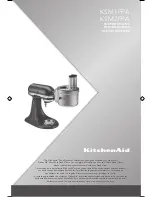PORT A WAIT STATES
MOTOROLA
PORT A
4 - 13
Figure 4-8 shows an example of mixing different memory speeds and memory-mapped
peripherals in different address spaces. The internal memory uses no wait states, X: memory
uses two wait states, Y: memory uses four wait states, P: memory uses five wait states, and
the analog converters use 14 wait states. Controlling five different devices at five different
speeds requires only one additional logic package. Half the gates in that package are used
to map the analog converters to the top 64 memory locations in Y: memory.
4.4
PORT A WAIT STATES
The DSP56002 features two methods to allow the user to accommodate slow memory
by changing the port A bus timing. The first method uses the bus control register (BCR),
which allows a fixed number of wait states to be inserted in a given memory access to all
locations in each of the four memory spaces: X, Y, P, and I/O. The second method uses
the bus strobe (BS) and bus wait (WT) facility, which allows an external device to insert
an arbitrary number of wait states when accessing either a single location or multiple
locations of external memory or I/O space. Wait states are executed until the external
device releases the DSP to finish the external memory cycle.
4.5
BUS CONTROL REGISTER (BCR)
The BCR determines the expansion bus timing by controlling the timing of the bus inter-
face signals, RD and WR, and the data output lines. It is a memory mapped register
located at X:$FFFE. Each of the memory spaces in Figure 4-9 (X data, Y data, program
data, and I/O) has its own 4-bit BCR, which can be programmed for inserting up to 15
wait states (each wait state adds one-half instruction cycle to each memory access – i.e.,
50 ns for a 20-Mhz clock). In this way, external bus timing can be tailored to match the
speed requirements of the different memory spaces.
On processor reset, the BCR is
preset to all ones (15 wait states).
This allows slow memory to be used for boot strap-
ping. The BCR needs to be set appropriately for the memory being used or the processor
will insert 15 wait states between each memory fetch and cause the DSP to run slow.
BCR
Contents
WT
Number of Wait States Generated
0
Deasserted
0
0
Asserted
2 (minimum)
> 0
Deasserted
Equals value in BCR
> 0
Asserted
Minimum equals 2 or value in BCR.
Maximum is determined by BCR or WT,
whichever is larger.
Table 4-2 Wait State Control
F
re
e
sc
a
le
S
e
m
ic
o
n
d
u
c
to
r,
I
Freescale Semiconductor, Inc.
For More Information On This Product,
Go to: www.freescale.com
n
c
.
..


















